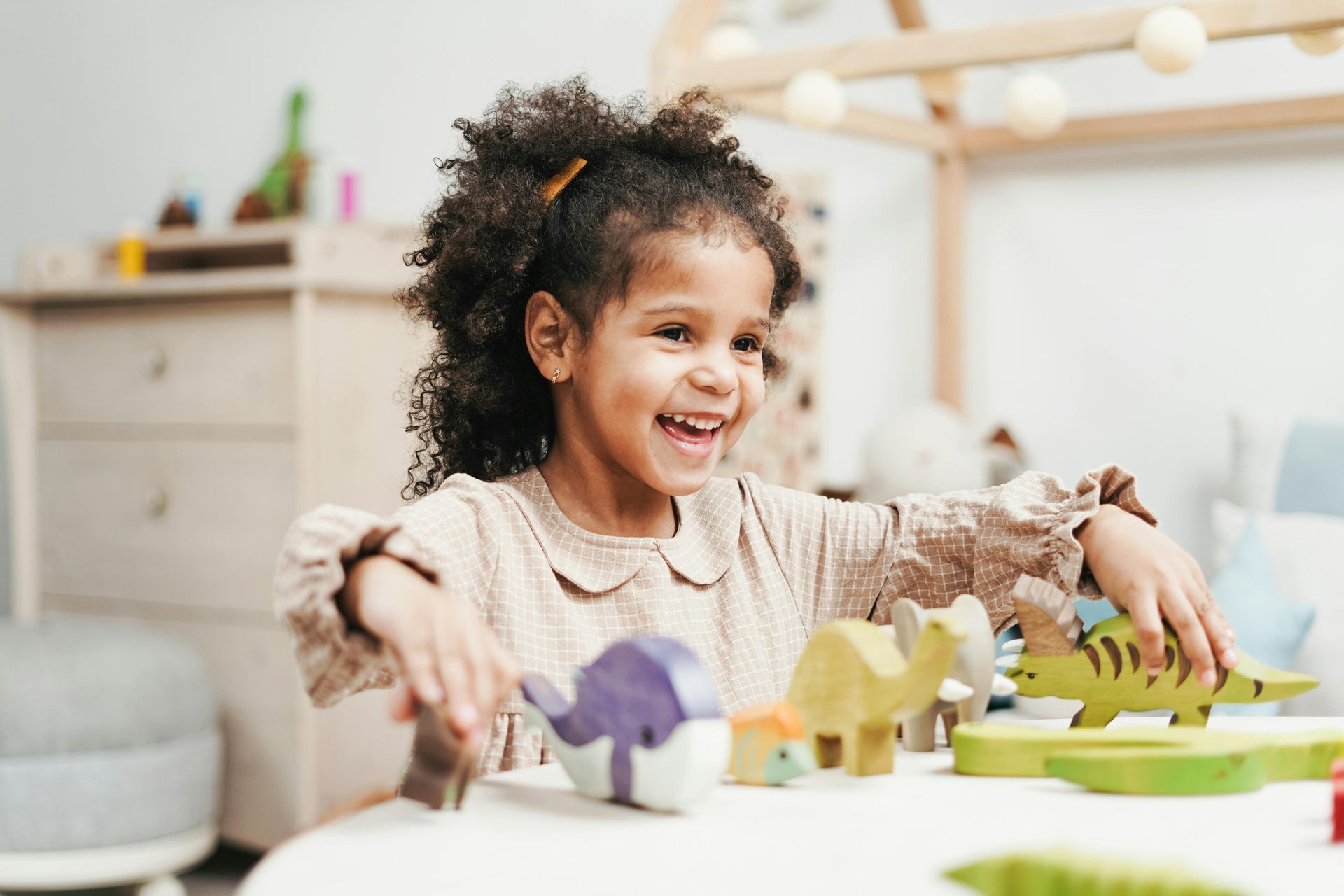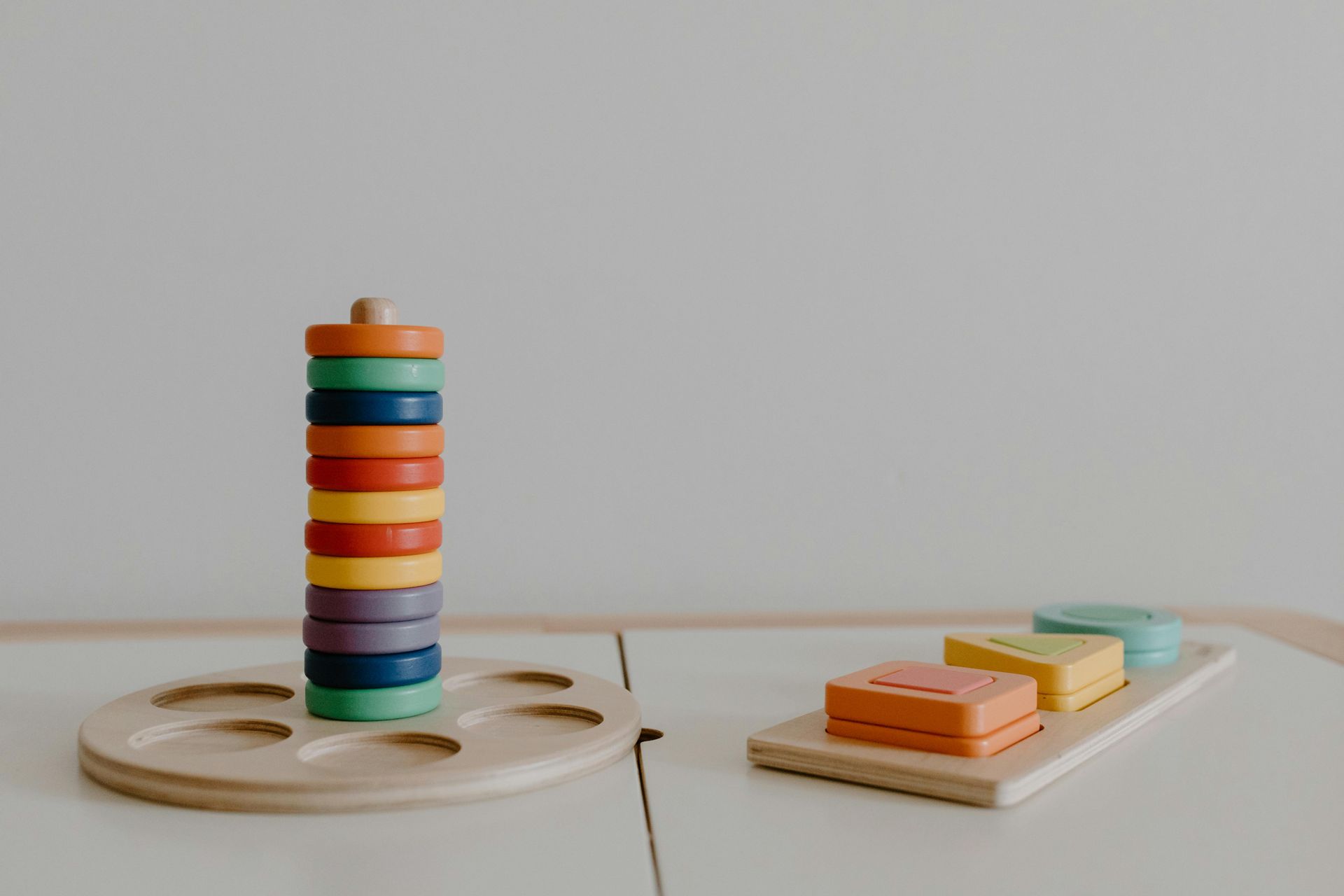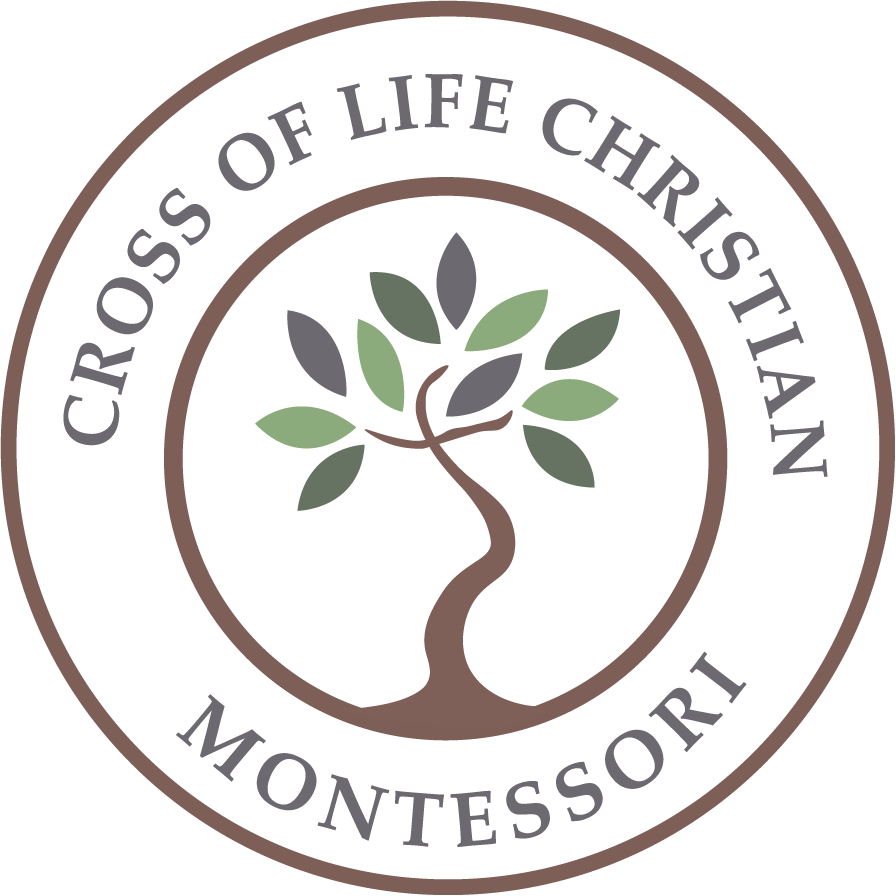
Less is more when it comes to toys in the playroom.

What comes to mind when you imagine a playroom? Often, people envision a room scattered with so many toys that you can hardly see the floor. Legos, puzzle pieces, stuffed animals, train tracks, and countless other toys fill the room to the brim. On their own, most of these toys can contribute to child development in a beneficial way. But pile them all on top of each other in a toy box and many of the benefits are lost in the clutter.
Luckily, Montessori offers a simple solution to this playroom overwhelm. In the Montessori philosophy, less is more. The secret to making a playroom both functional and lovely is to reduce the number of toys. This doesn’t mean throwing away all of the toys, and it also doesn’t mean only buying toys marketed as “Montessori” (which is often false marketing). It simply means paring down what’s available at any given time. Here are some easy steps to follow if you want to reduce the playroom clutter and give your children fewer, better options for play.
First, take stock of the toys by going through everything currently in the play area. This is the biggest task! If any toys are broken or missing pieces, set them aside. Then, from the complete and functional toys, choose a few toys that feature the things you want your child to focus on. Place these toys in the playroom in a tidy and accessible way, complete with all pieces necessary to fully utilize the toy. For younger children, offer a few simple sensory toys. As children age, choose a mix of sensory toys, motor skill practice, practical life, and imaginative play options. If you have multiple children using the same playroom, offer a mix of toys for their different ages and stages. While there isn’t a universal answer for the “right” number of toys to make available, research suggests that 4-6 complete toys (e.g., entire puzzles, sets of blocks, train tracks with an engine) leads to the deepest and most engaged sustained play.
But what should you do with all of the toys that aren’t in the playroom anymore? Hold onto them for toy rotation! After removing the broken or incomplete toys, pack away the rest of the toys, games, puzzles, and other playroom items that you want to hold onto. Place the toys that are not currently in use in a closet or bin that is not easily accessible to your child. Every few weeks, or when you notice your child is no longer deeply engaging with the current toys, switch out what you have on display for fresh options from the toy stash. By rotating out your child’s toys, the toys stay new and exciting and your child can better focus on deeply engaged play.
Children play more creatively and for longer periods of time when there are fewer options. When kids are offered too many choices, it can be challenging for them to decide which can lead to stress and overwhelm. By limiting options, we can give them the confidence to make choices with ease. In the playroom, limiting options not only enables them to engage more deeply with the toys, but also fosters deeper learning and greater independence for the child. And bonus, it reduces the visual clutter that has been shown to create stress in both children and parents. Research has even shown that reducing visual clutter can lead to greater language acquisition in young children by making it easier to process new words. Reduce the clutter by removing some toys and you easily increase the cognitive benefits of the toys your children already have.
Children thrive in an environment that is calm and orderly. While creating this type of environment is often easier said than done in a home with young children, a Montessori-based playroom is a great place to start!


